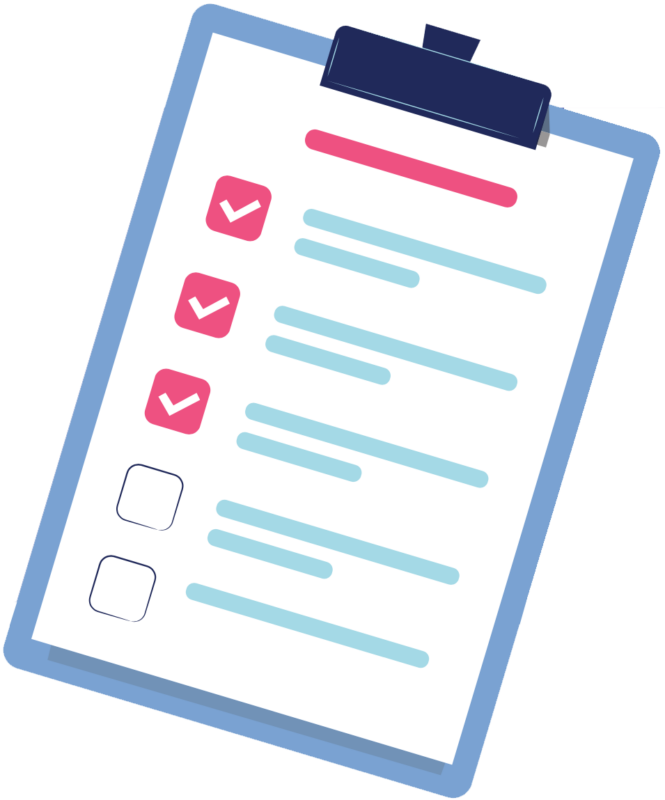
Confession: I’m that person—the one who asks people to be their friend. Under normal circumstances, I guess, friendships evolve through social interaction. But after moving halfway across the country in my early 30s, I needed friends ASAP to survive all the changes in my life—so I straight-up asked people I connected with if they wanted to be friends with me
Here’s the funny part: it’s worked 100% of the time.
More than once, I’ve had others remind me that I awkwardly asked them to be friends. But that doesn’t bother me. In an age where a click of a button invites a stranger on the internet to be your new digital friend, I figured I might as well try it in real life, too.
It is awkward, though.
Or at least that’s how I feel.
I’m a grown-up. Adults usually aren’t that forward with one another. Being blunt, oversharing, or making a bad joke can all get you labeled as the “weird” friend.
But adulting is already hard enough. We pay bills, do laundry, and wash dishes; why do we have to add the need to expertly navigate social interactions to the mix?
Of course, there’s no single solution for you to feel comfortable in a social interaction. But to start, you can work on being less awkward by connecting with empathy, practicing social interactions, and learning to read social cues. We’ll dive into these practical tips, but first, let’s step back and look at this nerve-wracking topic from a broader POV.
Table of contents
What does it mean to be awkward?
Awkwardness is largely a feeling, rather than a fact. There’s an important difference between being an awkward person and feeling like an awkward person. You might feel awkward at a party where you don’t know many people, but that doesn’t mean others perceive you as awkward.
By contrast, someone else may say or do things that make you feel uncomfortable, but that person doesn’t necessarily perceive themselves as awkward. In the end, it’s all about perspective.
Awkwardness is usually defined in opposition to normalcy. And what’s “normal” is based on social context. That means no one is awkward 100% of the time—perceptions of awkwardness vary from social situation to social situation, culture to culture, and so forth.
Phew. Who knew this would get so deep? Well, here’s where things get even deeper…
When discussing this topic, it’s important to acknowledge neurodiversity, the new science that studies the diverse ways in which human brains develop. Neurodivergence can look like autism or attention deficit hyperactivity disorder (ADHD), but it can also apply to anyone whose brain works a bit differently.
If you’re a neurodivergent person looking to feel more comfortable in your own skin, I have practical tips for that below; but I also want you to know that who you are is valid and wonderful. And if you want to learn more about neurodiversity, we recommend starting here or here!
In any case, however you characterize yourself, you’re probably here because you want to be less awkward—or at least feel less awkward. So, let’s begin there: with the feeling.
The pains of feeling awkward
Sometimes feeling awkward is more of a mindset than what we do and say. When a joke falls flat or you fumble your words, you can suddenly become overwhelmed with fear, anxiety, and discomfort.
Those feelings can manifest in different ways, including:
- Feeling unsure of how to act in social situations
- Worried that people aren’t interested in talking to you
- Feeling nervous or unable to calm down in social situations
- Difficulty making friends or developing relationships with peers
- Not accepting invitations to social events
- Obsessively analyzing past conversations
Thankfully, there are ways to become less awkward and overcome these feelings in order to avoid potential social and professional consequences that come with avoiding social interactions. The following tips can help you make meaningful connections without the social anxiety.
What about awkward workplace conversations?
If you struggle with social anxiety already, having difficult conversations—like letting someone go or conducting an interview—at work can be nerve-wracking. Here are a few ways you can prepare yourself for these awkward but necessary workplace conversations:
- Understand and be able to defend your decision
- Acknowledge the awkwardness of the situation
- Focus on the needs of the other person
- Remember that few people are going to sense your awkwardness
Examples of awkwardness in the workplace
Other than workplace conversations, there are some other ways for awkward situations to come up at work. Here’s a couple to look out for and how to handle them quickly:
- The accidental overshare
You’re at a team lunch, and you suddenly realize you’ve shared way too much personal info. Try laughing it off with, “Well, that was probably more than you all needed to know!” Acknowledge it, pivot, and move on. - The forgotten name
You just met someone, and seconds later, their name’s a blank. That’s okay! Just say, “I’m so sorry, I forgot your name!” Most people understand—and might even admit they forgot yours too. - The unintended interruption
Oops! You cut someone off in a meeting. A simple, “I apologize, please continue,” shows respect and keeps things moving. No need to overthink it. - The nervous small talk
You’re talking to the new employee at an office party and feel like every word out of your mouth is awkward. Try asking an open-ended question like, “What’s been keeping you busy lately?” Shifting the focus to them gives you a breather and keeps the conversation flowing. - The mistimed joke
If your joke falls flat, own it with, “Well, that didn’t land!” Humor’s subjective, and a light-hearted recovery can make everyone feel at ease. - The difficult feedback moment
Giving feedback can be tricky. Try, “I know feedback conversations can feel awkward, but I really value our collaboration.” Framing it as a team effort makes it less tense and more constructive.

How to be (or feel) less awkward: 11 tips
We’ve explored the ins and outs of awkwardness—where it comes from, what it feels like, and how people perceive it. All of that is important context for understanding this topic, but I’m aware you’re probably here because you’re curious about learning how to be less awkward. So, here are 11 ways to overcome awkwardness, or at the very least, feelings of awkwardness.

1. Think of awkwardness as a superpower.
Acceptance of your awkwardness can turn what feels uncomfortable into a superpower. It builds empathy. Knowing firsthand how difficult awkward situations can be, helps you better understand and empathize with others when they feel socially awkward.
This is a win-win for those who experience social anxiety. Not only is empathy a key to success in your professional and personal life, but the ability to find common ground with others is also crucial to minimizing uncomfortable conversations with strangers and friends alike!
2. Fake it till you make it.
While you’re working on accepting your awkwardness and all the good it can do for you, you can cope with the pains of feeling awkward by acting as if they don’t exist.
Put those acting skills to work and pretend you’re a smooth person who never makes any social blunders. Over time, you’ll become more and more like the persona you’ve created.
3. Focus on them, not you.
A great way to divert your attention away from your awkwardness and, in turn, improve your social skills is to focus on the other person. When you hyper-focus on your own internal struggle, you aren’t really listening to the other person, plus you’re only going to increase your feelings of alienation.
Put the focus back on the other person by:
- Being an active listener
Engaging in their interests
Asking good questions
Finding common ground
I want to add that smiling, body language, and making eye contact are other ways that help the person you’re speaking with feel like they’re being listened to. But that’s not always easy for neurodivergent people. Don’t worry about eye contact and body language if that’s not easy for you. Instead, focus on being an empathetic listener.
4. Focus on human-to-human connection.
Try to see conversations as a chance to connect rather than perform. If you’re catching up with a friend, ask about their day or something meaningful to them. Shifting your perspective to “human-to-human” connection can take away some of your self-consciousness, just like shifting the focus from you to them.
At work, if you’re speaking with a colleague or client, try listening actively and showing genuine interest, rather than worrying about how you’re coming across. This can help you understand their needs or opinions, and forget your awkward feelings.

5. Plan what you’re going to say.
Preparing a loose outline of what you want to say is like having a game plan in sports. In the workplace, if you’re heading into a meeting, identify your main talking points, or create a mental roadmap so you can communicate clearly.
Or when telling a story, rather than launching into every detail, think about what you can highlight. Having this kind of structure can help you avoid tangents and keep the conversation rolling.
6. Practice social interactions.
Now that you have your mental roadmap, practice it! Social anxiety and feeling awkward during social events are especially troublesome in a brand-new social setting. One way to alleviate those feelings is to practice everyday social interactions. Think of it as exposure therapy, with each social encounter you are pulling yourself out of your comfort zone and confronting your fears. With time and practice, those fears of awkwardness will fade.
7. Learn about social cues.
Social cues are messages that people send through non-verbal communication. They aren’t easy for everyone to pick up on, especially if you’re not neurotypical.
Here’s what to look out for:
If someone steps in closer, with a smile and open body language, that’s a pretty good indication that the conversation is going well. If someone turns away from you or steps backward, it might be time to end the conversation and talk to the next person. However, it’s important to remember that these are not steadfast rules for socializing with people.
8. Keep in mind small talk isn't as bad as it seems.
Many people hate making small talk. Just the idea of chit-chat can be a source of awkward and anxious feelings. Coming up with small talk can be excruciating when you first meet someone.
But small talk has a purpose. It’s the warm-up. Engaging in casual conversation allows you to gauge whether this person is a good fit for you. Can they be your new friend, peer, employee, or even romantic partner? Embracing small talk can help you feel less awkward about forging these new relationships.

9. Practice mindfulness.
Awkwardness can be heightened by your nerves, making you more self-conscious and likely to overthink each interaction. Practicing mindfulness allows you to relax so you can be your naturally amazing self in any social setting.
Mindfulness helps you stay present in conversations rather than getting lost in self-conscious thoughts and feelings of anxiety. If you’re meeting new people, rather than thinking about if your breath smells or how you’re dressed, try grounding yourself by feeling your feet on the floor or practicing deep breathing. The key is staying in the present moment.
10. Give yourself compassion.
It’s easy to dwell on awkward moments, but self-criticism only makes things worse. At work, if you fumble through a presentation or mispronounce a client’s name, remind yourself that everyone has off moments. Instead of focusing on the misstep, think about what went well or how you can approach it differently next time.
Same thing outside the office, try not to replay blunders in your head, but rather acknowledge them with self-compassion. Everyone has awkward experiences. Move past it, and focus on what matters: making connections.
11. Psych yourself up.
When you approach interactions with genuine excitement, you’re less likely to get caught up in awkwardness. Whenever you’re meeting a new person, remember that positivity is contagious. With positive self-talk and warm energy, your interactions will not only be less intimidating, they can actually be fun.
Do you know the real value of a conversation? We calculated the exact dollar amount.

How to respond to awkward moments
Along with these awkward workplace occurrences, here are some helpful tips and phrases for how to handle more general awkward moments with a bit of confidence, humor, and grace.
How to respond to awkward silences
Awkward silences happen to everyone, and the key to handling them is staying calm and using the moment as an opportunity to connect. You can jumpstart the conversation with something like, “So, what did you do this weekend?” Or, just embrace the silence and connect with yourself. Sometimes, silence isn’t as awkward as it feels. Take a deep breath, ground yourself, and let the conversation pick up naturally.
How to respond to awkward questions
If someone asks a question that feels too personal or uncomfortable, you can redirect it. Keep it brief and try to ask follow-up questions with something like, “Oh, it’s a bit of a long story! By the way, what are your Friday plans?” Redirecting back to the other person can politely move things along. Remember, focus on them, not you.
How to navigate embarrassment in conversation
I’ve said it once, and I’ll say it again, no matter the embarrassment, calling out the awkward moments is an easy way to smooth it over. It shows confidence and keeps things relaxed. Clear the air, if you call out your blunder, people will appreciate your self-awareness and sincerity.
Awkwardness has its place in the world.
Believe it or not, awkwardness is a necessary facet of our human emotions. In her book Cringeworthy, author Melissa Dahl points out that not only is eliminating awkwardness impossible, but those feelings can be a good thing.
Realizing that something you did or said made you feel awkward helps you to learn and grow. It only takes one instance of a joke landing wrong for you to know that it needs to be punched up. Or, you might decide it’s better to retire that specific gag and try something different next time. Either way, that initial awkward moment becomes a teachable moment that can help you become less awkward and better connect with others in the future.
My personal experience of becoming less awkward
Remember when I said I’m the person who asks, “Will you be my friend?” Well, I wasn’t always like that! Yes, now I’m better at navigating my awkwardness, but it took a very, very long time to accept (and even lean into) my quirks.
If I can leave you with one thing, it’s to embrace awkward moments, because really, it makes them less awkward. Accepting that awkwardness is part of the human experience has allowed me to be kinder to myself and laugh off the awkward moments. I’m still not perfect at it, but each day I’m learning to let go a little more.
Struggle with awkward customer or client conversations? There's help.
You’re not alone in feeling anxious whenever you pronounce someone’s name wrong or pull up the incorrect file when talking to a client. Remember that it happens to everyone, and one of the best ways to deal with awkward conversations is to own it and move on.

However, if you genuinely can’t move past those social anxieties and feelings of awkwardness when talking to clients and customers, Ruby is here to help.
Ruby’s virtual receptionists allow you to get back to the business of running your business without the stress of answering every single phone call.
Give your busy mind—and business—a break by leaving those customer calls to the professionals at Ruby.
Some common signs of social awkwardness include difficulty making eye contact, feeling tense or anxious in social settings, hesitating to join conversations, and overthinking interactions.
Awkwardness often comes from overthinking, self-doubt, or unfamiliarity with social norms. It can come from a fear of saying the wrong thing or simply feeling self-conscious.
If you frequently feel nervous or anxious in social settings, avoid gatherings, or obsessively analyze past conversations, you may be socially awkward.
In general, introverts enjoy solitude and “recharge” by being alone, while being awkward involves feeling uneasy or anxious in social situations.
Abby Levandoski is a writer living in the Chicago area. To check out her work or hire her for a project, visit writingbyabby.com.



